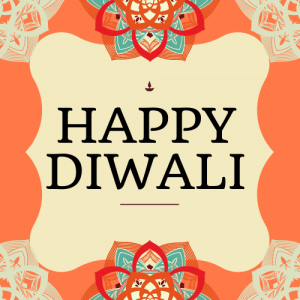November 12, 2020 | Boydl

Diwali (also called Deepavali, Dipavali, Dewali, Deepawali, or the Festival of Lights) is the biggest and most important celebration in India. The name originates from the row of clay lamps (diya or deepa) that Indians light outside their homes in the representation of the inner light that protects from spiritual darkness. This celebration is over 2,500 years old. This holiday is celebrated by Hindus mainly but is also enjoyed by non-Hindu communities too. Diwali takes place over 5 days in either October or November. This year it spans November 12- 16 with the main celebration day in the middle on November 14.
To learn more, or to find some activities or materials to check out, keep scrolling down!
- Here is a National Geographic video with more information
Rangoli Decorations
Rangoli is the name for these amazing decorations used during Diwali.
- Here is a very large handmade beautiful time lapse video
- Here is a video with instructions on how to make your own sand
- Here is a video on some fun easy designs for Rangoli art
Day 1: Dhanteras
Diwali begins with the first day known as ‘Dhanteras’ or the worship of wealth. Goddess Lakshmi is worshipped on this day and there is a custom to purchase something precious. People clean and decorate their homes.
- Here is a video containing many different stories explaining the origin of Dhanteras
Day 2: Naraka Chaturdashi or Choti Diwali
The second day is Naraka Chaturdashi or Choti Diwali. People wake up early and apply aromatic oils to themselves before taking a bath. This is said to remove all sins and impurities. They wear new clothes, offer Puja and enjoy by lighting diyas and bursting few crackers.
-
Here is a video of ladies in Fatehpur Beri village celebrating Choti Diwali
Day 3: Lakshmi Puja
The third day is the main Diwali festival. Lakshmi Puja is performed on this day. Goddess Lakshmi is believed to enter homes and bless people with good fortune. Tiny oil diyas, candles, and electric lights are placed around the house. Families exchange gifts and gather together to burst crackers.
- Budget friendly Diwali decoration idea
Day 4: Govardhan Puja or Padva
The fourth day is Govardhan Puja or Padva. It is the day when Lord Krishna defeated Indra by lifting the huge Govardhan Mountain. People make a small hillock, usually of cow dung, symbolizing Govardhan and worship it.
- Here is more information on this celebration
Day 5: Bhai Dooj
The fifth and last day is Bhai Dooj. On this day sisters invite their brothers for a lavish meal and perform a ‘tilak’ ceremony. Sisters pray for their brother’s long and happy life while the brothers give gifts to their sisters.
- Six easy Diwali snack recipes
Books & More
Pictures from past Diwali celebrations at CPL









